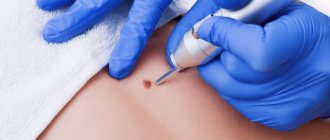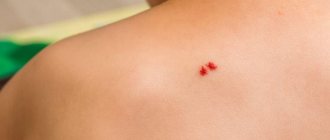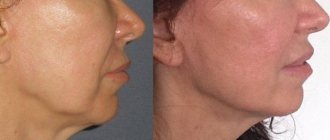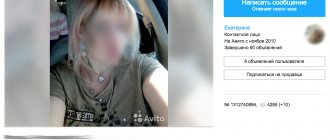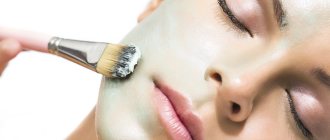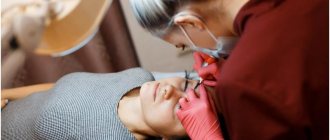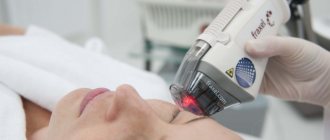Characteristics of education
Among specialists, millet is also known as a follicular or retention type cyst. Usually, its occurrence is facilitated by clogging of skin pores with keratinized particles.
Today, two types of such formations are known. Primary - have a sudden appearance and do not depend on external factors. Secondary - localized in the area of skin damage resulting from injuries or a developed inflammatory process.
A distinctive feature of milia is that in most cases they do not go away on their own. As a result, a person has to experience great inconvenience for a fairly long period of time.
A characteristic sign of millet is a white or yellowish tint. The formation always protrudes above the surface of the skin and has a dense structure. The contents consist of dense keratinized cells and a small amount of fatty deposits.
In most patients, rashes are found in the area of the chin and eyes. However, there may be cases when formations are also found on the genitals. On average, the rash does not exceed 3 mm in size.
Once whiteheads appear, they can maintain their original shape and size for many years. If they are not disturbed, they do not cause inconvenience to a person. If opened, they may disappear naturally. But if an infection gets inside, it can further cause the development of an inflammatory process.
Localization of white pimples on the eyes
Millet is most often located on the upper and lower eyelids, but can appear anywhere there is hair. It looks like a small cyst filled with epithelial cells and sebum. The source of formation is the excretory ducts of the sweat glands or hair follicles.
It appears as single or multiple nodular rashes on the eyelids of a white-yellow color. The elements of the rash are clearly demarcated from healthy skin, without an inflammatory halo. They feel dense to the touch; in the center there may be a black comedon - an accumulation of horny masses. They resemble a grain of millet in appearance, which influenced the name.
The nodules reach a size of 1-2 mm, often located symmetrically. Millet on the skin of the upper or lower eyelid does not cause pain, only aesthetic discomfort. Pronounced rashes are a cosmetic defect.
In the area of the inner edge along the lash line it can cause discomfort. Convex nodules come into contact with the mucous membrane when blinking or moving the eyeballs, causing the sensation of a foreign object in the eye, lacrimation, and burning.
On the lower eyelid, millet manifests itself as chaotic multiple rashes, tending to be located at the outer corner of the eye, spreading to the cheeks and cheekbones.
Milia do not appear on the mucous surface. If a white nodule or inflammation occurs on the inner surface of the eyelids, you should immediately contact an ophthalmologist for diagnosis and treatment.
Reasons for the appearance of millet grass
Despite the fact that experts have been studying these rashes for a long time, they have still not been able to establish the exact causes of the appearance of millet grass. They only have information about factors that can trigger the formation of whiteheads:
- As a result of skin injuries, among which the greatest danger is burns, abrasions, scars and cuts.
- Frequent stress, emotional overstrain, worries.
- Increased sebaceous secretion, improper skin care. With prolonged contact with sunlight, severe forms can develop.
- People with impaired functioning of the thyroid and pancreas are most susceptible to the appearance of these rashes. Experts associate disturbances in these organs with changes in hormonal levels.
- Diseases of the digestive tract and unbalanced diet.
- Disturbed balance of sex hormones. As a result, rashes can occur during adolescence, pregnancy and menopause.
Diagnosis and treatment of lumps on the eyelid
Only an ophthalmologist can determine the true cause and type of seal on the eyelid during a consultation or diagnostic examination. Treatment of the tumor is selected individually in each case and can be carried out both with medication and surgery.
As you can see, there are many reasons for the appearance and types of neoplasms on the eyes, so only a specialist can determine their “nature”. The Eye Clinic of Dr. Belikova employs experienced doctors and uses modern equipment, which allows an accurate diagnosis to be made as quickly as possible, as well as the most effective manipulations.
Risk factors
Millet grasses are one of those types of formations that do not have selectivity. Therefore, they can appear in any person, regardless of age and gender.
But statistics show that rashes most often occur in adults. The risk of their occurrence is especially increased in the presence of the following factors:
- prolonged contact with ultraviolet radiation;
- cosmetic procedures (dermabrasion, laser resurfacing);
- bubble formations resulting from contact with poisonous plants;
- skin diseases;
- burns.
The greatest threat to health is posed by secondary formations, which under certain conditions can cause serious consequences. Therefore, before you start treating millet on your face, you should definitely consult a doctor.
Curettage
Single rashes can be removed mechanically. The intervention can only be carried out by a qualified specialist. An ordinary cosmetologist will not undertake such an operation. In his work, the specialist uses a special tool that looks like a spoon. Initially, the cyst is punctured and then squeezed out along with the capsule. This technique carries risks due to the possibility of infection in the wound. Under no circumstances should you fight rashes this way at home. Moreover, you should not remove milia from children in this way. Manipulations should only be carried out by a qualified physician.
Curettage is used for single rashesAfter removal, a wound is formed at the site of the milia, which, with proper care, heals within a week. The damaged area must be treated with an antiseptic. In addition, you should avoid repeated trauma to the skin. To speed up the healing of damaged epidermis, your doctor may prescribe an anti-inflammatory ointment.
Salon treatments
To quickly get rid of rashes, it is recommended to carry out treatment in a beauty salon. This way you can be sure that you will quickly solve your problem without it reoccurring. After the examination, the doctor will choose the most suitable method for eliminating the rash.
In most cases, patients faced with a similar problem are prescribed cleaning . It involves a mechanical effect on the rashes, ensuring their removal from the skin. The essence of the procedure is to squeeze out pimples. But in order to completely cleanse the skin of formations, after mechanical removal it is also advisable to peel the skin.
If the skin of the face is covered with sufficiently large formations, then a curette - a special hook-shaped device with which you can effectively clean the milia from the inside. But lately this method has become less and less popular. This is due to the negative consequences it can lead to. After the procedure, scars may remain or an inflammatory process may develop.
Much more effective are methods that involve hardware removal of formations. Among them, the most popular are:
- skin cleansing using galvanic current;
- laser cleansing;
- vacuum or ultrasonic cleaning;
- injections of a special solution that resolves millet.
The electrocoagulation method is indicated for those patients who have large and multiple rashes on the skin. Facial cleansing is carried out using a special device with a hot tip, which is applied to the millet. After such treatment, a crust appears at the site of formation. Patients are prohibited from removing it mechanically. It is necessary to wait until it falls naturally, which usually occurs after 3-5 days.
Laser facial cleansing is very popular among patients, which completely eliminates any painful sensations. After this treatment, a small crusty formation remains on the skin.
Getting rid of folk remedies
To remove unsightly white rashes around the eyes, you don’t have to go to a cosmetologist. Home peeling shows good results. Although the effect will not be noticeable immediately. You can use ground coffee, soda, oatmeal, and sugar as a scrub. All you need to do is gently treat the affected area and then rinse off the product used with warm water.
This technique is not suitable for those with overly sensitive skin. Scrub may cause irritation.
It will take a lot of time to remove milia using folk remedies. As a rule, such therapy takes several months.
Regardless of the method used to remove whiteheads, it is worth doing everything to prevent them from appearing again
It is important not to neglect hygiene procedures, eat right, and periodically visit a qualified cosmetologist
Removing it yourself at home
If there are few formations and they do not cause discomfort, it is not necessary to seek help from a specialist. If there is a problem on the face, treatment can also be carried out at home. Although everything must be done very carefully, since infection can easily be introduced into the wound. Therefore, if you are not sure, it is better not to take risks, but to consult a doctor.
Do-it-yourself cleaning
If certain circumstances do not allow you to visit a cosmetologist, then during the procedure at home you need to follow a number of rules:
- First of all, you should wash your hands with soap and lubricate them with an antiseptic composition. Be sure to cleanse your face of dirt and makeup.
- Prepare a cosmetic needle, soda, boiled water, alcohol and hydrogen peroxide. You will also need Xeroform and clean cotton pads.
- Before you start squeezing out formations, the skin must first be steamed. Take a pan, pour boiled soda solution into it, for the preparation of which you need to dilute two teaspoons of soda in one liter of water, heat it and hold your face over the pan, covering your head with a towel, for 10 minutes.
- When your skin is soft enough, blot it with a paper towel.
- For the procedure you will need a sterile needle. If you can’t get one, you can use a regular one, which must first be boiled for 20 minutes and then wiped with alcohol.
- Now you need to carefully pierce the millet with a needle, and this should be done in such a way that the needle enters the growth at a right angle.
- When you push through the formation, contents will begin to flow out of it. You need to press on the millet until the ichor appears. This will be a clue that the nodule shell has come out.
- After the procedure, the wound is treated with hydrogen peroxide, and then covered with Xeroform.
After you remove the formation, it is necessary to ensure proper care of the treated areas of the skin. All wounds should be lubricated with an antiseptic and sprinkled with an antibacterial composition. This will help prevent infection and skin damage.
Folk remedies
When trying to get rid of millet grass at home, you can turn to traditional medicine. With the help of folk remedies, you can quickly get rid of millet grasses without putting mechanical pressure on them .
- A well-proven remedy is compresses based on freshly squeezed viburnum juice. Just take a bandage, soak it in viburnum juice, then place it on your skin and leave for 15 minutes.
- A gruel made from crushed golden mustache helps well in the fight against millet grass. It is recommended to make compresses based on this plant at night, additionally fixing them to the face with gauze.
- An effective remedy is a compress based on milk and wheat flour. It is very important that the mass is thick and cannot flow off the skin. You need to keep the compresses for 40 minutes.
- A mask based on sour cream (15 g) and pumpkin puree (20 g) can help cleanse the skin. After mixing the ingredients, the resulting composition is applied to the skin and left for 15 minutes.
- You can also use a product based on hydrogen peroxide and bodyagi powder (15 g). A mask is prepared from these ingredients, which is washed off after 15 minutes.
- A mixture based on egg white and honey has a cleansing effect. This mixture is smeared on the millet, and after 15 minutes it is removed.
- To cleanse your facial skin of millet, you can use a composition made from crushed garlic and sunflower oil (30 ml). This composition should be lubricated three times a day on problem areas of the skin.
Hardware cosmetology
There are several hardware methods to combat millet grass - which one will be preferred by the cosmetologist after reviewing the patient’s medical history. The specialist must take into account:
- Number of milia;
- Damage area;
- Patient's health status;
- Presence/absence of contraindications.
Laser coagulation: is a proven method that is well tolerated by most patients. Cauterization gives excellent results and is often prescribed to combat millet grass, especially in the presence of large areas of skin lesions. For the purpose of removal, a carbon dioxide laser is most often used, which allows layer-by-layer, high-precision removal of pathological areas without thermal and mechanical effects.
Among the advantages of the technique are the absence of direct contact and the risk of suppuration due to the bactericidal effect of the beam, simultaneous coagulation of blood vessels, the possibility of visual control, absence of bleeding and a good cosmetic result. After exposure to the beam, the milium becomes covered with a crust, which disappears after 1.5-2 weeks, and the treated area of skin heals. After the procedure, the patient must treat the crusts with a disinfectant.
Electrocoagulation: a very popular method of removing milia. During the procedure, not a laser beam is used, as in the previous case, but an alternating high-frequency current. The effectiveness of the procedure has been proven in practice and confirmed by positive reviews from patients and specialists. After a short time, the crust disappears, and the acne disappears without a trace.
How to get rid of the problem
If millet appears in a newborn, this is normal. No action should be taken in this case. This is a physiological process caused by changes in the developing body and increased hormonal levels. Milia of microscopic size also does not always require treatment. Most often, the phenomenon goes away on its own as a result of renewal of the epidermis. But this will take several months.
Such microcysts of a larger size are not dangerous; more often, they are just a cosmetic unpleasant defect. But it’s better to get rid of it, because complications are possible. There are several types of treatment for millet.
This video will tell you about the causes and symptoms of millet:
https://youtube.com/watch?v=u_m4PBt3ND4
Therapeutic method
This is diet therapy. A method that eliminates the cause of the disease, if its appearance is caused by a malnutrition, and cleanses the body from the inside.
Physiotherapy and procedures
The most common and reliable method. It is based on the complete removal of milia. You will not be able to perform the procedure at home. This is done by a doctor or cosmetologist.
- It is acceptable to use special peeling, but more often a mechanical or laser method is used to remove millet. The mechanical method is significantly inferior to the laser method. In the first case, minor damage and inflammation of the skin are possible, in the second case, when using the laser removal method, this is not observed.
- Sometimes the method of electrocoagulation (using electric current) is used. After removing milia using this method, a crust appears, which goes away on its own after 1-2 days.
- Let's use the curettage method. This is a mechanical removal, which is rarely used, because it leaves scars.
- After removal of milia by mechanical and laser methods, treatment with an antiseptic solution is prescribed for several days.
Medication
In some cases, it is advisable to use a medicinal treatment method, which includes taking medications that can cope with the problem. The treatment is complex, including ointments for external use and medications for oral administration. In this case, the following drugs are prescribed:
- Retinoids: Isotrexin, Effenzel, Differin,
- Brewer's yeast containing selenium and zinc,
- Hormonal drugs
- Antibiotics: Levomekol, Triclosan, Erythromycin, Clindamycin,
- Ointments: ichthyol, tar, zinc, sulfur,
- Boric and salicylic acid, which are used for wiping.


